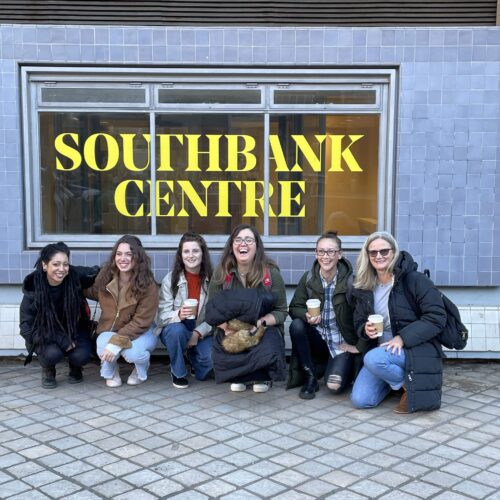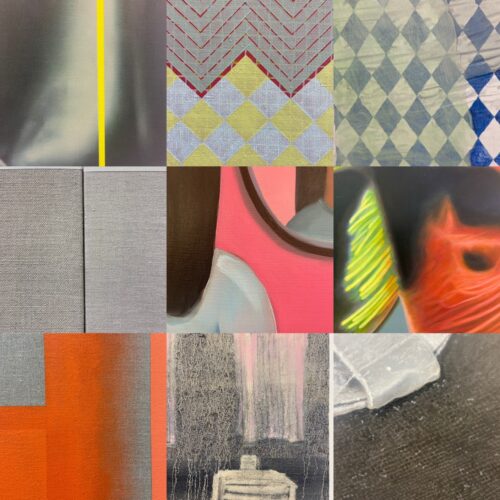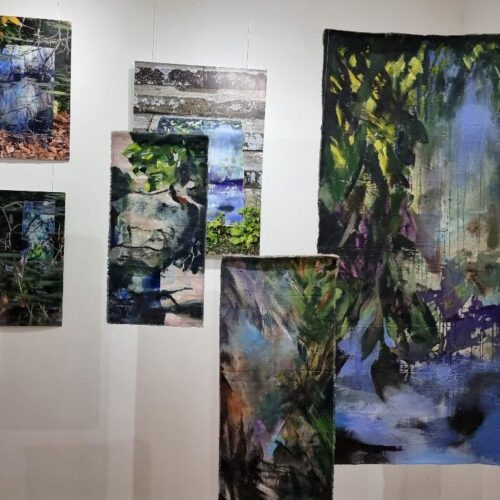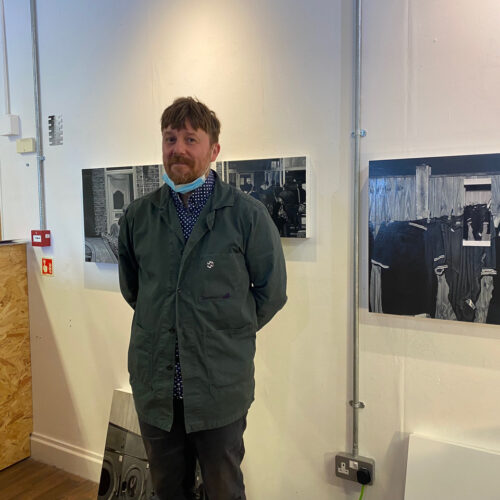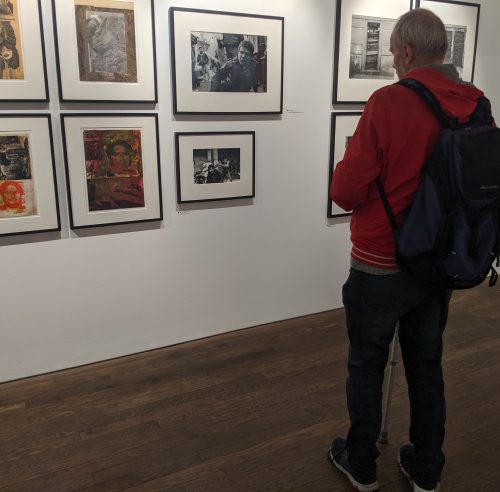
Study event review: OCA London
The OCA London Regional Study Group is a cross-discipline group for OCA students in and around London and also students visiting London. So far there have been three study events. I’ve found the two I’ve attended to be very inspirational and also good to bounce ideas around with other OCA students concerning each others’ work.
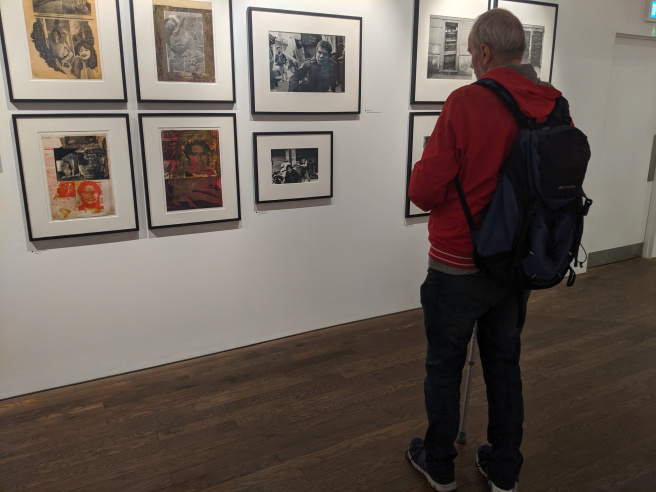
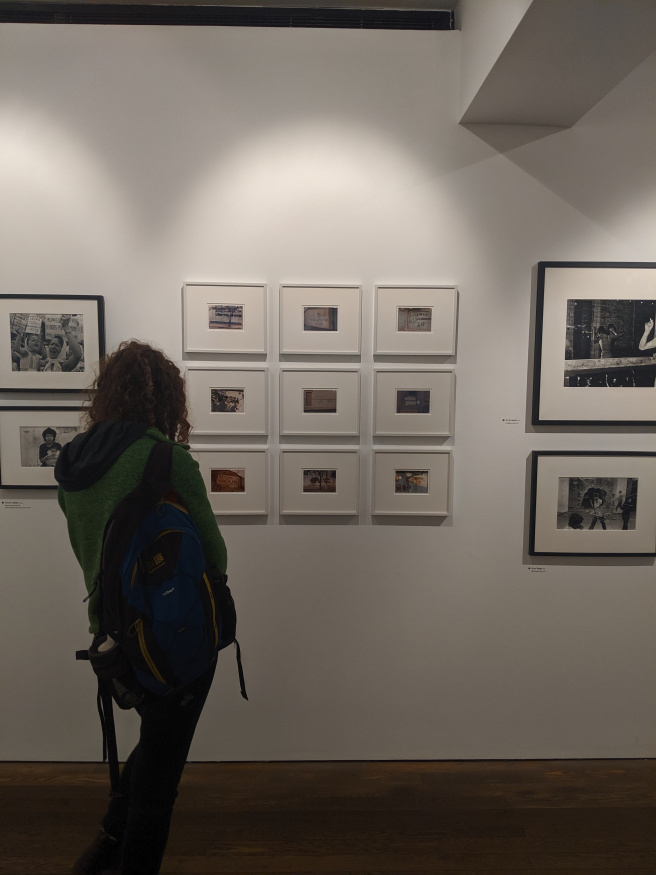
We discussed each other’s work briefly before the exhibition, I had my phone to hand with my second assignment for Body of Work on it. The others really liked my composite approach and especially the use of colour. Although colour wasn’t my biggest preoccupation when taking the images, I feel the cloudy weather I chose to use (which incidentally makes constructing the composites easier) was a large factor in the colours being brought out well. They used the word ‘accent’ to describe the colour combinations. I have to admit I wasn’t aware of this when taking the images! I will try to pay attention to the colours in the scene and how they might be reflected back by the people in the scene when making future composites as a reaction to this helpful feedback. This did bring up a point in my head though: how aware should you be of these smaller but significant ‘punctum’ – (Barthes, 2003:25) (to refer to a popular Barthes term) when taking photographs out in the field? I for one usually only become aware of the punctum after the fact when I am reviewing the photos on my computer. Having said this, using a tripod-based approach to photographing has slowed me down significantly and I have become more aware of the smaller details when composing the photograph.
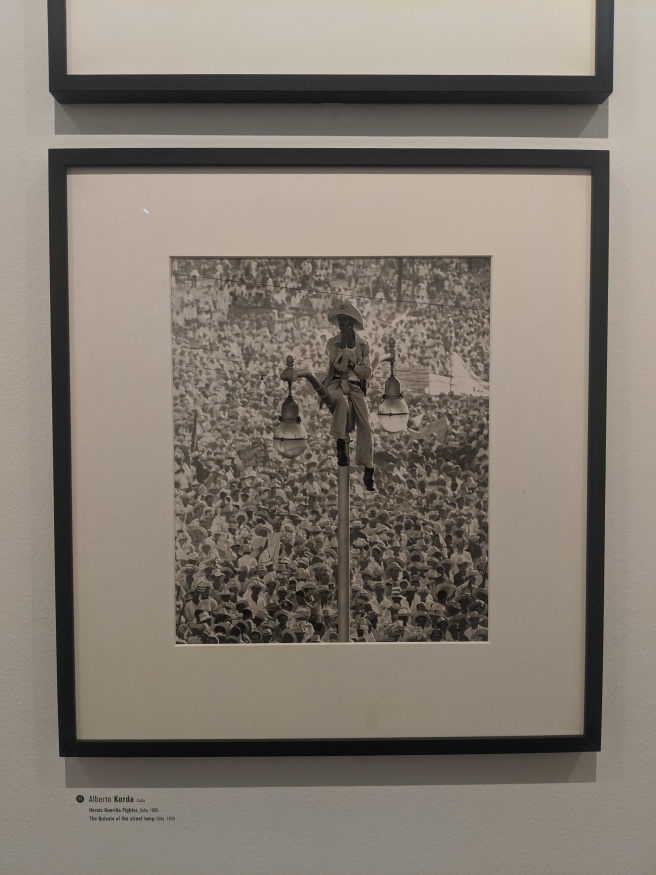
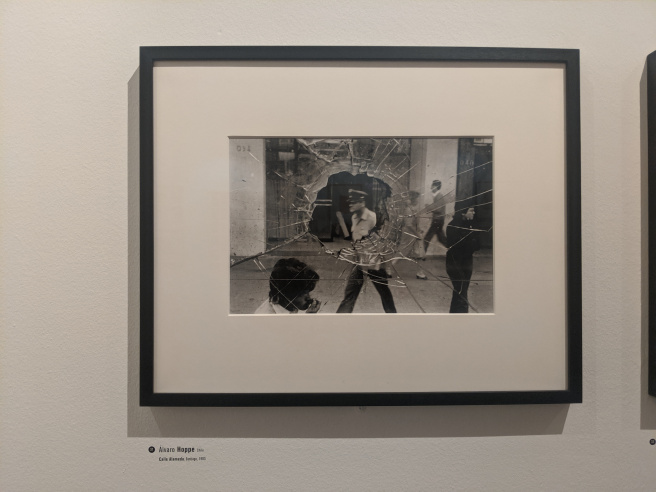
We preferred and spent more time in the Shouts floor of the exhibition than the Pop-ular floor. Some of the Pop-ular floor was quite graphic while the Shouts floor we found to be deeper in meaning and single images from different artists really caught our attention. Some of the single photographs that caught my eye in particular were: The Quixote of the street lamp, Cuba, 1959 by Alberto Korda and Calle Alameda, Santiago, 1983 by Álvaro Hoppe. These two images made an impression on me because of their unique perspectives. They seemed to be captured from impossible angles or viewpoints which made me look at them again. They were all the more interesting when I read about the backgrounds to these photographs of political unrest or upheaval in the exhibition booklet.
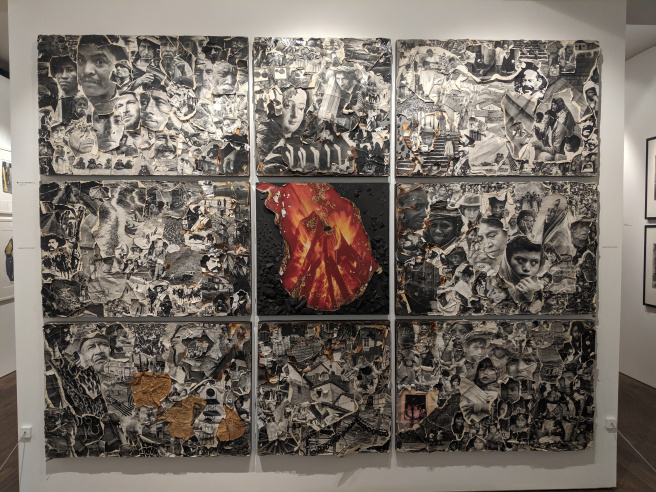
Then there was the more obviously impressive giant collage present called Catharsis, 1976 by Enrique Bostelmann. I could see a relationship to fire evident in the collage, with burnt embers and partially charred photographs a part of the collage. This could have been the relationship to ‘catharsis’ the title of the work referred to. I found it mesmerising to look at and even more fascinating when I learnt from the booklet the ‘polyptych’ was comprised of discarded photos from the darkroom which had been collected over years by the artist.
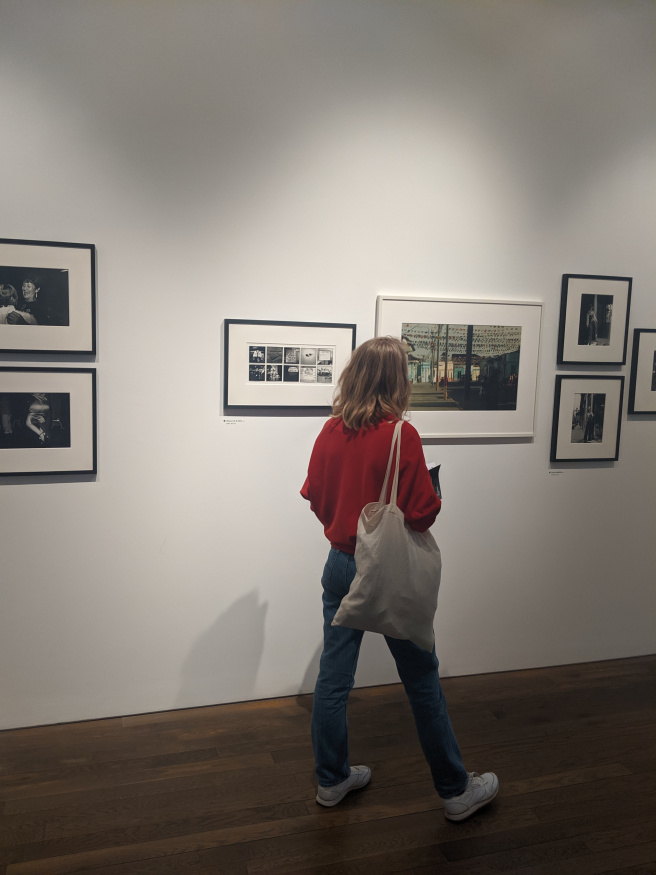
At the end we had a relaxed chat about our studies with OCA and how they were going. Richard shared his thoughts on potentially carrying out a project to do with climate change with which he has deep feelings/concerns about. Bev is currently looking for an exhibition venue to display her drawings as part of her Sustaining Your Practice module. I discussed my thoughts for the literature review/extended essay. I came to a slight realisation that the regeneration of Deptford (the subject of my photographs) was similar in a fragmentary sense to the photographs themselves. The regeneration of Deptford has been ever-changing and disconnected. Similarly photographs can never cover all bases so there is a thread of narrative in these fragmentary documents (photographs) and how they relate to one another. When writing the essay this could be the link connecting the photography to the regeneration.
If you are interested in joining the OCA London group, there is a Facebook page dedicated to it called: OCA London, where OCA students can send a request to join. It is also possible to look out on the OCA discuss forum for posts in regional groups under London for any upcoming study events; our next one should be in November.
References:
Barthes, R. (2003) ‘Extracts from Camera Lucida‘ In: Wells, L. (ed.) The Photography Reader. Oxon: Routledge. pp 25.
Fabry, A. and Wills, M. (2019) Urban Impulses: Latin American Photography from 1959 to 2016. London: The Photographers’ Gallery.
|
|



